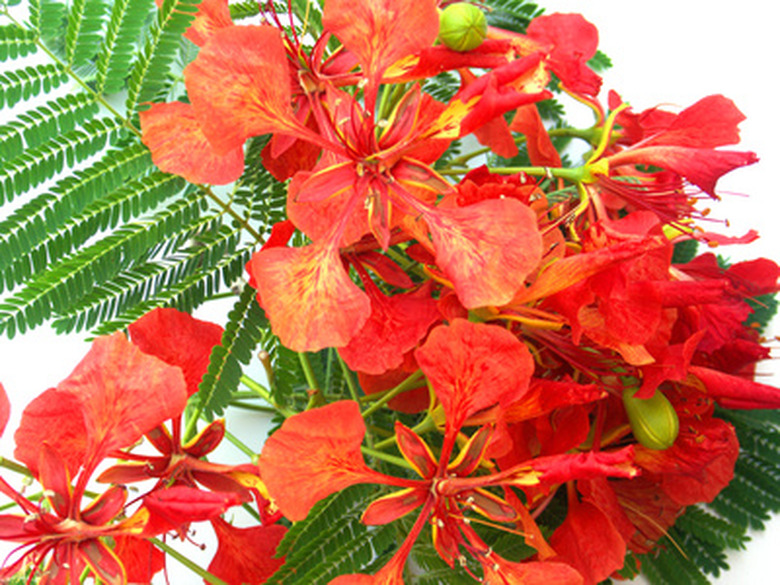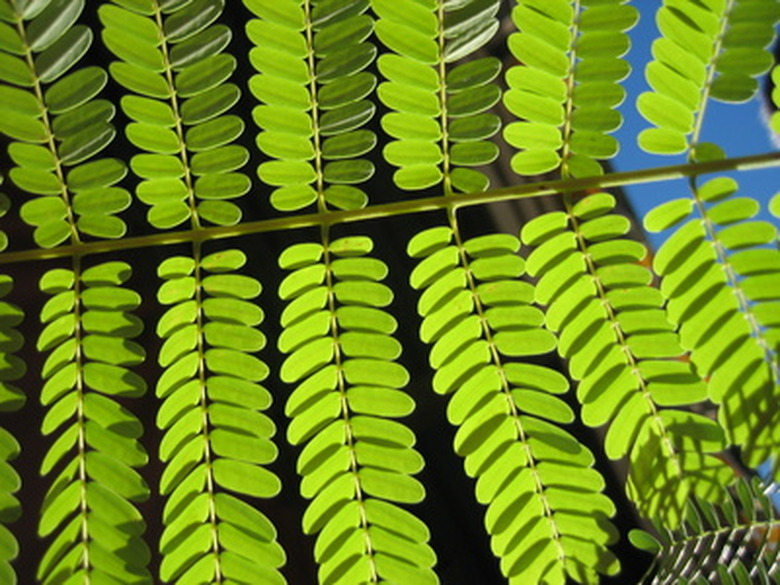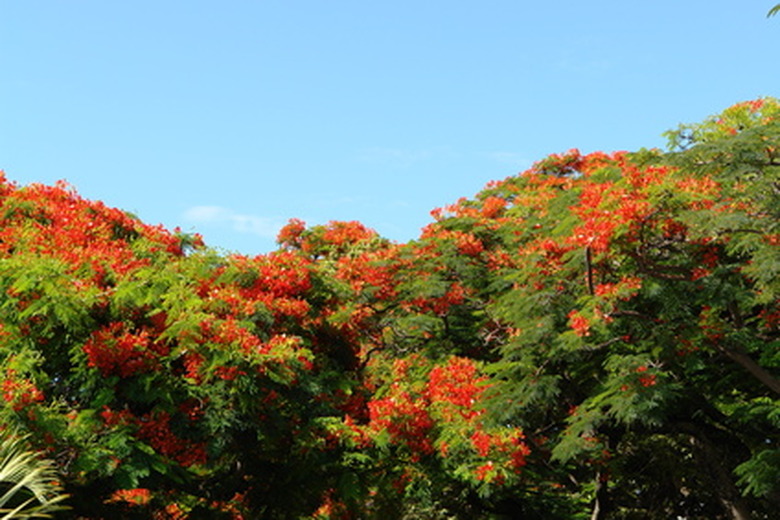The Royal Poinciana Tree
Behold one of the world's most magnificent flowering trees–whether called royal poinciana, flamboyant or the flame tree, to catch a glimpse of this tree in full bloom in late spring or early summer is an unforgettable sight. Today, it is grown worldwide across tropical regions, a symbol of exotic beauty in large parks or lining spacious avenues often alongside palms and tropical fig trees.
Taxonomy
Royal poinciana is a member of the pea or legume family, Fabaceae. Based on the shape of its flower, it is further grouped in a subfamily named Caesalpinioideae. The scientific name for this tree is Delonix regia.
Origin
Royal poinciana is native only to the island of Madagascar, and is endangered in the wild.
Ornamental Features
The semi-green royal poinciana grows 30 to 50 feet tall and 30 to 40 feet wide with an umbrella-like canopy and low swooping branches. The tree loses its foliage in the winter depending upon the degree of soil dryness, and in spring, the feathery, fern-like leaves emerge. Its smooth, gray bark makes the trunk look like an elephant's leg. Leaves have an overall oval shape, but are compound with two ranks of branching lined with tiny leaflets. In late spring to early summer, branch tips don large clusters of orange to scarlet-red flowers. (A naturally occurring variety of the tree produces golden yellow flowers.) The blossom of the poinciana has five claw-like petals; one upper petal bears speckles of white or red and is called the "standard." Enormous brown seed pods develop after flowering, and about one year later splits open to release the horizontally arranged seeds.
- Behold one of the world's most magnificent flowering trees–whether called royal poinciana, flamboyant or the flame tree, to catch a glimpse of this tree in full bloom in late spring or early summer is an unforgettable sight.
- The tree loses its foliage in the winter depending upon the degree of soil dryness, and in spring, the feathery, fern-like leaves emerge.
Growing Requirements
Grow royal poinciana in U.S. Department of Agriculture hardiness zones 10 and warmer where winter frosts do not occur. Plant them in a fertile soil that is moist and well-draining, preferably in a location sheltered from strong winds. At least eight hours of sunlight daily is needed for healthy plants and good flowering. During the growing season, water freely and often to encourage leaf and flower growth. In winter, do not irrigate to encourage widespread leaf drop and a more abundant flowering later that spring.
Cultural Insight
There is no reason to over-prune a royal poinciana because its natural form is to have low and drooping branches. The roots of royal poinciana are surface-dwelling and strong, making underplanting difficult and not a beneficial practice. The tree should be planted no closer than 30 feet from concrete or asphalt roads, sidewalks or building foundations according to "Tropical Flowering Trees." While fast-growing, seedling trees don't usually bloom before they are about 5 years old. This tree is also photo-sensitive at night, so flowering is diminished or absent on trees illuminated by street lights, or occurs only on the sides of the canopy that is away from the light source.
- Grow royal poinciana in U.S. Department of Agriculture hardiness zones 10 and warmer where winter frosts do not occur.
- The roots of royal poinciana are surface-dwelling and strong, making underplanting difficult and not a beneficial practice.
Royal poincianas flower best in climates with a pronounced dry winter season. Thus, in tropical climates with year-round moisture and high humidity, flowering is sporadic in summer at best. Poincianas do not prosper in regions with Mediterranean climates.
References
- "Tropical Flowering Plants;" Kirsten Albrecht Llamas; 2003
- "Tropical and Subtropical Trees;" Margaret Barwick; 2004
- "A-Z Encyclopedia of Garden Plants;" Christopher Brickell and H. Marc Cathey, eds.; 2004


